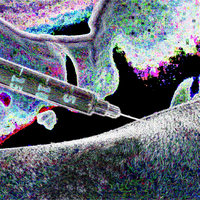| Carbon | |
|---|---|
| Esters [] | |
|---|---|
| Carbon stearate | |
| Molecular structure via molpic based on CDK |
| Physical properties [] | |
|---|---|
| Molecular mass | 12.011 g/mol [1] |
| Density | The apparent density of beech charcoal is 0.45 g/mL and that of pine charcoal is 0.28 g/mL; the density of pore-free charcoal ranges between 1.38 and 1.46 g/mL, depending on the kind of wood; the porosity of beech charcoal is ca 70%; the bulk density of charcoal, which depends on the kind of wood and the size of the pieces, ranges from 180 to 220 kg/cu m; the heating value ranges between 29 and 33 kJ/g g/cm3 [1] |
| Appearance | Steel gray to black greasy feeling solid. [1] |
| Odor | Odorless. [1] |
| Melting point | Melting point equals greater than 3500 °C [1] |
| Boiling point | Sublimes at 3642 °C; triple point (graphite-liquid-gas), 4492 °C at a pressure of 101.325 kPa [1] |
| Solubility | Solubility in water: none [1] |
| Predicted LogP | 0.6 [1] |
| Structural Identifiers [] | |
|---|---|
| Molecular formula | C [1] |
| IUPAC name | carbon [1] |
| SMILES | [C] [1] |
| InChI | InChI=1S/C [1] |
| InChIKey | OKTJSMMVPCPJKN-UHFFFAOYSA-N [1] |
Carbon
Carbon (also known as Carbon Nanotube, Carbon nanotube, single-walled, Carbon 12, Adsorbente, Chemisorb, Carbone attivo, Elemental Carbon, SU2000, USEPA/OPP Pesticide Code: 016001 or 97793-37-8)
Stereochemistry []
Carbon is a
| Anodyne Usernotes [] | |
|---|---|
| 0xea / Carbon via | Nothing to note |
 Anodyne
Anodyne